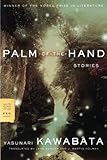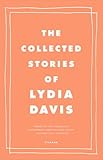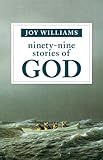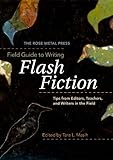As writers and editors of flash fiction, we love stories that are structured around a story’s gaps, the nuanced caesuras of what’s left out. In fact, the promise of a good flash story—a genre usually defined as being less than 1,000 words—is the way a narrative moves through an escalating series of hints. There’s no expectation of comprehensiveness, and often little room for connective tissue; rather, flash fiction invites the reader to live in the spaces of a story and imagine what’s left out.
As list-makers, however, we wish we could have been more comprehensive. One list begets other lists, and in making this list, we realized how many more lists are needed for flash fiction as it continues to emerge and become ever more popular.
 As a concession to the lack of comprehensiveness, we’ve broken this list into three categories: some of our favorite classics, a few go-to anthologies, and then a sprinkling of recent collections. Please, though, consider this list to be a piece of flash fiction itself—a series of hints toward other wonderful flash collections in the world, including ours, Nothing Short of 100, a collection of the best 100-word stories from 100 Word Story magazine.
As a concession to the lack of comprehensiveness, we’ve broken this list into three categories: some of our favorite classics, a few go-to anthologies, and then a sprinkling of recent collections. Please, though, consider this list to be a piece of flash fiction itself—a series of hints toward other wonderful flash collections in the world, including ours, Nothing Short of 100, a collection of the best 100-word stories from 100 Word Story magazine.
 Palm-of-the-Hand Stories by Yasunari Kawabata
Palm-of-the-Hand Stories by Yasunari Kawabata
Yasunari Kawabata, the 2oth-century Japanese writer and Nobel Prize Winner, wrote short shorts before the category of flash fiction existed. He called his stories “palm-of-the-hand” stories because they were so small they could essentially fit in one’s palm.
This collection includes a total of 70 stories drawn from 1922 until Kawabata’s death in 1972 (he died in a gas-filled room, a probable suicide). He started writing the stories as his way to write poetry. Each one of his miniatures is molded by a spare understatement, a suggestiveness that comes from his painterly eye for detail, a focus on the telling perception.
Kawabata was so dedicated to an aesthetics of concision that he even condensed his most famous novel, Snow Country, into an 11-page story, “Gleanings from Snow Country,” which appears in this collection.
 The Collected Stories of Lydia Davis
The Collected Stories of Lydia Davis
Lydia Davis is as close as you’ll get to royalty in the flash fiction genre. Sometimes it can seem as if she invented brevity. The Collected Stories of Lydia Davis includes 200 pieces, amounting to just 700 pages (an average of approximately three pages per story), 30 years’ worth of work.
Davis’s distinctive voice pulls stories from our everyday concerns, misunderstandings, and mishaps to fashion short shorts that are wry and wise. Her best stories explore the chasm of love, with narrators obsessively going through lists and chronologies of events to try to understand what happened. Davis’s stories have very little in the way of plot. Some stories, in fact, are just a single sentence or two. As Jonathan Franzen said, “She has the sensitivity to track the stuff that is so evanescent it flies right by the rest of us.”
 Clarice Lispector: The Complete Stories
Clarice Lispector: The Complete Stories
If Elena Ferrante met Lydia Davis, they might write somewhat like the late Clarice Lispector. Dark, sharp, moody, yet sometimes focused on prosaic themes and occurrences, these stories represent the beloved Brazilian writer’s work from adolescence to the end of her life.
Lispector’s stories, sometimes a little bit mad, certainly delirious, decenter the reader in exhilarating and exhausting ways. “Coherence, I don’t want it anymore,” a character in one of her stories thinks. “Coherence is mutilation. I want disorder.” Brevity plus disorder makes for fascinating aesthetic.
 Ecstatic Cahoots by Stuart Dybek
Ecstatic Cahoots by Stuart Dybek
Ecstatic Cahoots starts with two lines of dialogue — “You’re going to leave your watch on?” / “You’re leaving on your cross?” — that recur throughout the collection in different situations, like the refrain of a song or poem that changes meaning through repetition.
The collection includes 50 stories that range in length from two lines to 13 pages. Many of Dybek’s quirky miniature masterpieces are a type of prose poem, and you might even say some read as prayers. In an interview with 100 Word Story, he said that one target to aim for in flash fiction is a “profound suggestiveness,” and with such a technique in hand he makes the small moments in his stories have big meanings.
 99 Stories of God by Joy Williams
99 Stories of God by Joy Williams
99 Stories of God is a collection of radically compressed stories, many barely a page long, some just a single paragraph, with a quirky and jabbing whimsy that is reminiscent of Lydia Davis. Not all of the stories are written about God, but they are all written with a sacred adherence to Emily Dickinson’s guide to writing: “Tell all the truth but tell it slant.”
Williams plays with deep questions in her stories, such as the existence and invisibility of God. Her disjointed connections, piercing details, and brutal humor jar one’s notions of the world, and often leave one baffled, but in the best of ways.
Flash Fiction Anthologies
 The Rose Metal Press Field Guide to Writing Flash Fiction: Tips from Editors, Teachers, and Writers in the Field
The Rose Metal Press Field Guide to Writing Flash Fiction: Tips from Editors, Teachers, and Writers in the Field
If you want a mentor text to guide you into writing flash fiction, there’s no better book than this one. The book is a true field guide, with probing essays on the art of flash fiction by such masters as Steve Almond, Pamela Painter, Robert Olen Butler, Deb Olin Unferth, Ron Carlson, and Jayne Anne Phillips. The book is designed as a teaching resource, but its essays, prompts, and exercises equip any flash writer to explore how constraints can open up a different kind of creativity and invite in unconventional approaches.
 Best Small Fictions Anthologies
Best Small Fictions Anthologies
Publisher Braddock Avenue Books describes Best Small Fictions as “the first contemporary anthology solely devoted to honoring the best short hybrid fiction published in a calendar year.” Founded by Tara L. Masih in 2015 and annually staffed with the genre’s most respected writers and editors, the annual series is eagerly awaited by nominated writers while also serving as a sort of primer for those wanting to understand the evolution of the short-short form.
The 2018 Best Small Fictions will showcase 53 stories that first appeared in a range of literary publications—from a 50-word short in the tiny hand-stapled Blink-Ink to a longer piece from The New Yorker—and highlight another 101 finalists.
 New Micro: Exceptionally Short Fiction
New Micro: Exceptionally Short Fiction
Micro fiction is defined as a story that is less than 300 words. This anthology, coming out in August, includes newcomers and established writers alike: Amy Hempel, Kim Addonizio, Richard Brautigan, Bonnie Jo Campbell, Stuart Dybek, Joyce Carol Oates, and James Tate among them. The anthology is the latest from James Thomas, who along with Robert Shapard, helped put flash fiction on the writing map with their series of flash fiction anthologies (Sudden Fiction, Flash Fiction Forward, Flash Fiction International) that began decades ago. This time, Thomas teamed with microfiction author Robert Scotellaro (who wrote a notable collection of 100-word stories, Bad Motel, and has work in 100 Word Story as well).
Recent Flash We’re Excited By
 Every Kiss a War by Leesa Cross-Smith
Every Kiss a War by Leesa Cross-Smith
Cross-Smith’s stories are Southern with a capital S, steeped in cigarette smoke, whiskey, and sex. In this collection, lovers cheat and regret, embrace and fight, make out and make up. Evocative and written in a warm, confident style, the stories in this collection make you feel like you’re sitting with an old friend on a porch in summer, talking about life, sipping something so good it burns.
 Dictionary Stories by Jez Burrows
Dictionary Stories by Jez Burrows
Flash fiction invites unconventional approaches to telling stories in such a small space, as exemplified by Jez Burrows’s Dictionary Stories. Burrows became obsessed with the italicized example sentences in dictionaries and began playing with them, remixing them into idiosyncratic pieces of short fiction. It all started when Burrows looked up the word “study,” and saw this dramatic story starter: “He perched on the edge of the bed, a study in confusion and misery.” The collection, which includes 150 stories, was spawned by a popular Tumblr blog, and each story is categorized by topic, whether it’s “dating” or “the occult.”
Other Household Toxins by Christopher Allen
A respected editor at SmokeLong Quarterly, Allen collected his own stories for seven years before publishing his book with Matter Press. He moves smoothly between the everyday and the surreal, with a focus on fathers and sons, lovers, and taboo, moving easily between hard and gentle tales.
 Pretty by Kim Chinquee
Pretty by Kim Chinquee
Sophisticated, restrained, and even slightly aloof, Chinquee’s stories often focus on love lost, found, and squandered. This collection is for studying and re-reading, with images and characters sometimes appearing teasingly just on the edge of our field of vision.
 Damn Sure Right by Meg Pokrass
Damn Sure Right by Meg Pokrass
When you read Meg Pokrass, you know she was once a poet. In fact, she’s taken many of her poems and transformed them into stories—perhaps the perfect activity for any flash fiction author. But to present her fiction as guided mainly by lyricism is misleading. There are few authors out there as daring and honest and real as Meg Pokrass. She possesses that rare gift of a writer, knowing how to poetically tell a tale while not flinching from the uncomfortable truths she discovers along the way.
 Because I Wanted to Write You a Pop Song by Kara Vernor
Because I Wanted to Write You a Pop Song by Kara Vernor
Kara Vernor’s work is world weary yet hopeful, her characters inhabiting malls, amusement parks, video stories, blue collar neighborhoods. With an unflinching voice, Vernor tells stories largely about girls and women who are trying to figure out life and find their place in it. Read “Ferris Wheel,” a remarkable micro about a blind date with the hopes of the narrator lifting up and dropping like an old, creaky ride.
 On the Edges of Vision by Helen McClory
On the Edges of Vision by Helen McClory
Dark and disturbing, these stories don’t shy away from violence and grit. If nothing else, read “Pretty Dead Girl Takes a Break” to see just how masterfully McClory mingles the surreal ramblings of the victim with our everyday obsession with crime. This flash alone is a downright harrowing social commentary on women as victims—and entertainment.
Grant Faulkner is the Executive Director of National Novel Writing Month and the co-founder of 100 Word Story. His stories have appeared in dozens of literary magazines, including Tin House, The Southwest Review, and The Gettysburg Review. His essays on creativity have been published in The New York Times, Poets & Writers, Writer’s Digest, and The Writer. He recently published a book of essays on creativity with Chronicle Books, Pep Talks for Writers: 52 Insights and Actions to Boost Your Creative Mojo. He’s also published a collection of 100-word stories, Fissures, which have been included in The Best Small Fictions 2016 and the new W.W. Norton Anthology New Micro: Exceptionally Short Stories.
Lynn Mundell is co-founder and co-editor of 100 Word Story and co-editor of its anthology, Nothing Short Of: Selected Tales from 100 Word Story, as well as a managing editor at a large health care organization. Her short-short stories and creative nonfiction have appeared in many U.S. and U.K. literary journals, including Tin House online, Booth, Superstition Review, Portland Review, Permafrost, Flash: The International Short-Short Story Magazine, The Sun, and Five Points, as well as in anthologies including New Micro: Exceptionally Short Fiction (W.W. Norton & Company, August 2018). Lynn earned her MFA in Creative Writing from American University and is an advisory board member of the U.C. Berkeley Extension Post-Baccalaureate Certificate Program in Writing.
Beret Olsen is a writer, photographer, teacher, and long-time proponent of the Oxford comma. Currently, Beret teaches black and white film photography in the Bay Area, where she lives with her husband and two pre-tweens. She writes two blogs: Bad Parenting 101 and LobeStir, and you can find her photography at www.beretolsen.com.
Jon Roemer is publisher/senior editor of Outpost19, an award-winning publishing house based in San Francisco. His writing has appeared at The Writer, OZY, San Francisco Chronicle Book Review, 3:AM and elsewhere. Jon studied literature and fiction writing at Northwestern and Arizona and has developed creative projects for a handful of Fortune 100 companies.
Image Credit: Pexels.









